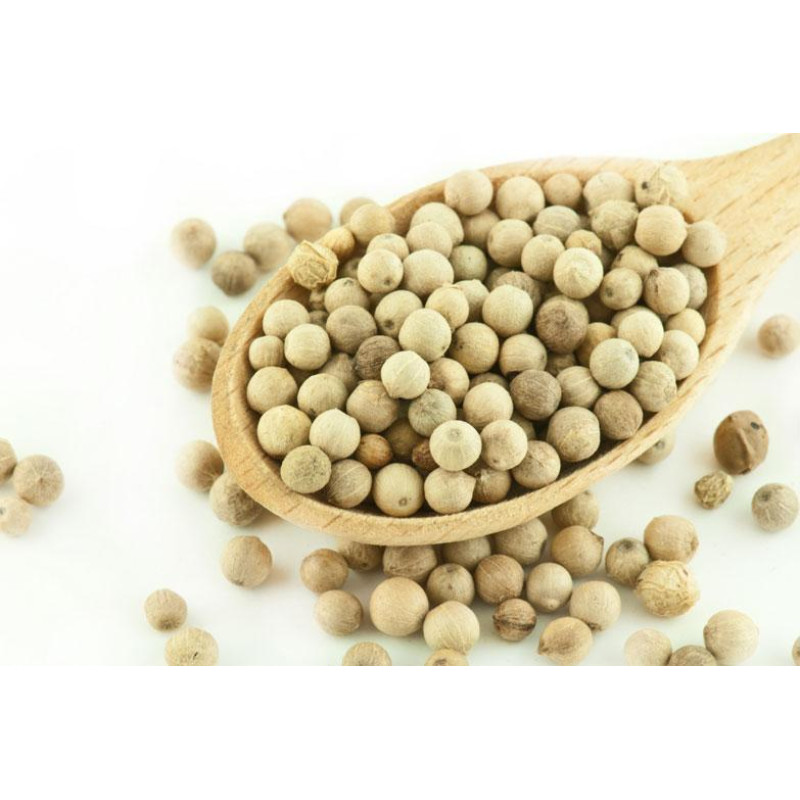Description
White pepper is produced from fully ripened fruit after removal of the outer pericarp either after or before drying. White pepper is preferred for use in food products, such as colored sauces, salad dressing, soups, and mayonnaise, where dark-colored (black) pepper is undesirable. In some European countries, it is white pepper that is in common use.
The total world demand for white pepper is around 38,000 metric tons per annum, which is a quarter of the worldwide black pepper production.
Pepper Pharmacopoeia
The use of black pepper as a drug in both the Indian and Chinese systems of medicine, apart from its wide spectrum use as a food additive, is well documented. Pepper is elaborately describedfor its medicinal values in the ancient Indian system of medicine Ayurveda.
Pepper is described as a drug that enhances digestive power in the body; improves appetite; and cures colds, coughs, dyspnea, diseases of the throat, intermittent fever, colic, dysentery, worm infestation, and hemorrhoids. Pepper is also prescribed to relieve toothache, muscular pain, inflammation, leucoderma, and even epileptic fits. Black pepper is called maricha or marica in Sanskrit, which implies its ability to dispel poison. In the Chinese system of medicine, pepper is used as an antidote against snake and scorpion bites.The preceding descriptions explain the diverse actions of pepper being used in the Indian system of medicine, either as such, or through its active ingredients in many formulations. The beneficial effect of pepper in medical formulations can be attributed to piperine and other phenolic amides and essential oils.
Several researchers have reported the anti-inflammatory property of pepper. Researchers evaluated the mechanism of anti-inflammatory activity by biochemical processes and concluded that piperine acted positively in the case of early acute changes in inflammatory processes. Perhaps this is the only compound derived from pepper that is clinically used in the treatment of human epilepsy. This is an alternative to dilantin therapy, which is used in Chinese hospitals for the treatment of epilepsy.
Antioxidants are one of the most crucial biochemical compounds in the human system ensuring good health. They scavenge free radicals, which trigger many untoward biochemical reactions in the human system, and control lipid peroxidation in mammals. Of late, there is considerable interest in antioxidants. Lipid peroxidation is a chain reaction that is a constant source of free radicals, which initiate further peroxidation, which trigger deterioration of food, but also damage tissue (both of animal and plant origin), which in human beings causes many inflammatory diseases, aging, atherosclerosis, and cancer. Many investigations reveal that pepper and its phenolic constituents, such as amides, possess good antioxidant properties.

